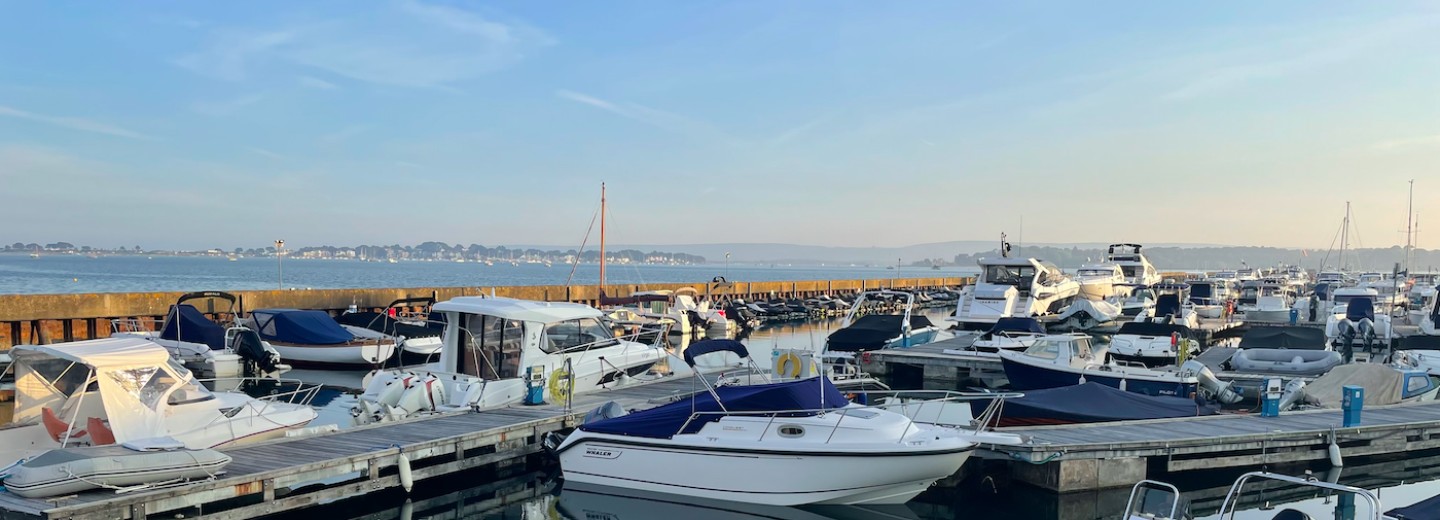Sailing break
Wan Lik Hang apologises for not posting a blog last week. He has been taking a few days off sailing the south coast of England. In more relaxed, holiday, mode, here is a brief review of some of the places he visited.
Weymouth
Weymouth (population 53,000) is a seaside town on the southern coast of England. Its history goes back to the 12th century. The town played a part in the spread of the Black Death, the settlement of the Americas and the development of Georgian architecture. Today, visitors are attracted by its harbour and position, halfway along the Jurassic Coast – an area important for its geology and landforms. Once a port for cross-channel ferries, Weymouth Harbour is now home to a commercial fishing fleet, pleasure boats and private yachts.

The Jurassic Coast

The cliffs are being eroded, revealing layers of sedimentary rock, that exposes geological history over a period of 185 million years. There is an almost continuous sequence of rock formations covering the Triassic, Jurassic and Cretaceous periods.

The many fossils found along this coastline show how animals and plants evolved. During the Triassic this area was a desert, while in the Jurassic it was part of a tropical sea. In the Cretaceous it was covered by swamps. The fossilised remains of the animals and plants that lived in those periods are very well preserved, providing a wealth of information on their body shapes, the way they died and even the fossilised remains of their last meals.
Poole

Though human settlement in the area dates from before the Iron Age, Sandbanks, at the entrance to the bay where Poole is located, today has the reputation of containing the most expensive properties in the world. Poole itself is a tourist resort, attracting visitors with its large natural harbour.

The Solent
The Solent is a strait between the Isle of Wight and Great Britain. It is about 20 miles (32 kilometres) long. Remains of human habitation have been found from the prehistoric, Roman, and Saxon eras. Offshore from Bouldnor, Isle of Wight, divers have found at 11 metres (36 ft) depth the submerged remains of a wooden building that was built there on land around 6000 BCE when the sea level was lower and the land was higher.
Over thousands of years, the land sank (a process still continuing) to submerge many valleys and creating today’s characteristic coastal inlets, as well as submerging the Solent. The estuary of the Solent River was gradually flooded, and eventually the Isle of Wight became separated from the mainland. This happened about 7,500 years ago.
The Hurst Spit narrows the sea crossing to just over 1 mi (1.6 km). Ferocious currents produced by rising and falling tides result in alarming seas even on calm days. Hurst Castle, at its tip, was an artillery fort first established by King Henry VIII.

Beaulieu
Wan Lik Hang’s journey ended at the Beaulieu River. The Beaulieu River is one of the few privately owned rivers in the world and has been under the custodianship of the Montagu family for over four centuries. The ownership of the river can be traced back to 1204 when King John granted the estuary, together with 10,000 acres of land, to the Cistercian monks who founded Beaulieu Abbey. When the abbey was dissolved in 1538, it was sold to Lord Montagu’s ancestor, and the family have been caring for it ever since.
At the start of the 18th century, Buckler’s Hard was a humble landing place on the Beaulieu River. But, from the 1740s the site was used to build over 50 wooden ships for the Royal Navy. The Master Shipbuilder, Henry Adams, and his sons built ships which fought at the Battle of Trafalgar in 1805.

Here was journey’s end for Wan Lik Hang. But be prepared for more news and history of this unique coastal area in future posts!
Worked on the article:

Wanlikhang






